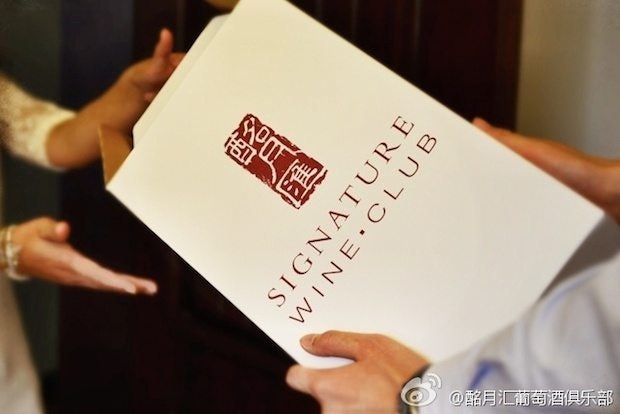
Signature Wine Club was created in response to Chinese demand for education about lesser-known labels. (Courtesy Photo)
From fashion to travel, many Chinese luxury consumers are developing increasingly unique and individualistic tastes. This trend is no different when it comes to wine, according to Signature Wine Club Founder Fongyee Walker in a recent interview with Jing Daily.
Walker founded Signature Wine Club, China’s first independent subscription wine club, in July 2014 as a response to Chinese drinkers’ growing thirst for knowledge about lesser-known vintages. The company provides a lifestyle service that selects wine for its members and ships it to them in attractive packaging with detailed descriptions and tasting notes. In order to learn more about what kinds of wine will be filling Chinese connoisseurs’ glasses in 2015, we talked to Walker about recent shifts in the market and different demographics’ favorite labels.
What are some trends you are observing among wine drinkers and the wine scene?#
In general terms, consumers are moving towards being more adventurous with their selection of wines—i.e. instead of sticking to just a few famous regions, such as Bordeaux, they are looking to other places and countries, such as Hawke's Bay New Zealand, Napa United States, etc. They are now looking for wines that satisfy them in terms of taste rather than just drinking wine “for the label.”
What do Chinese consumers like to drink these days? Has there been a shift in preference? If so, what caused it?#
Yes, people are braver in their choices nowadays—instead of sticking to dry red wine (gan hong干红), more and more consumers are turning to more exciting types of wine, such as aromatic whites, sparkling wines, fortified, medium sweet whites, etc. This is very terrific as it shows that more people are beginning to explore different styles and types of wine—this has been brought about mainly by people learning about different types of wine and wanting to try wines that they have heard about.
Are there regional differences in wine consumption and preference in China?#
Generally speaking, our students in Chengdu and Chongqing very much prefer stronger flavors—they tend to go for richer, more powerful styles of wine. They love things like Sherry and Port. Northern Chinese students are also similar—they like bold reds, very aromatic whites, and richer flavors. People to the south prefer more delicate and elegant wines with not so much tannins, they tend to prefer whites to red.
However, having said that, just about everywhere in China seems to love Gewurztraminer (qiong yao jiang, 琼瑶浆), and many people are also beginning to drink sparkling sweet wines like Asti (but this is common to EVERY single market in the world—not just China!).
What makes a wine appealing to a Chinese consumer?#
I do not think you can say “Chinese consumer” like that. A young trendy lady in Shanghai will pick a very different wine from a rich businessman in Xi'an. They drink wine for different purposes and they think about wine in different ways.
However, you can say that for a beginner consumer, it is still packaging and regional fame that drives many wine sales. They look at the bottle and make decisions on that—so they are looking for an attractive traditional label (like one with a Château on it), a famous region (like Barossa or Bordeaux), and a cork-sealed bottle (because they don't know better).
More knowledgeable consumers will tend to buy more modern packaged wine (not necessarily old looking), wine from less famous areas or grapes (like Syrah rather than Cabernet Sauvignon or Sonoma rather than Napa) and wine under screw cap (because it is a better closure for keeping the quality high and keeping out oxygen).